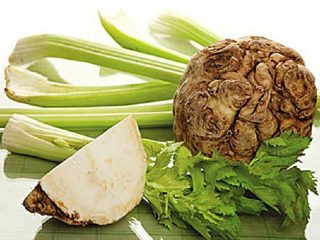Content
Mint on the windowsill is a good option for those who want to enjoy aromatic healing tea all year round or always have an exquisite seasoning on hand for preparing various dishes. With proper care, even in the dark winter months, the windowsill will be decorated with delicate, bright green plants.
Is it possible to grow mint on a windowsill?
Despite the fact that mint is an unpretentious crop, getting a good harvest on the windowsill requires some effort. If you create all the necessary conditions for the plant, and then provide only basic care, the result will not be long in coming.
Mint varieties for growing on a windowsill
There are many varieties of mint, most of which can be successfully planted on your windowsill at home all year round. For example, varieties Zabava, Ceremony, Moskvichka, Menthol, Zhemchug, etc. are suitable.It is advisable to choose low-growing crops, although you can root cuttings obtained from a plant purchased in a store or market.
A widespread indoor flower, some varieties of which look very similar to ordinary garden mint and have a similar aroma. This is plectranthus, also known as indoor mint, but unlike the garden variety, it is not eaten.

Indoor mint is used in folk medicine
How to plant mint in a pot on a windowsill
In order for mint to grow well on the windowsill, it is important to properly prepare the soil and planting material, choose a suitable container and create conditions for seed germination or rooting of cuttings. The landing process itself is quite simple.
Preparing the soil and planting container
You can prepare a substrate for growing mint on a windowsill yourself by mixing garden soil, peat, humus and river sand in equal proportions. To disinfect, the mixture is poured with a weak solution of potassium permanganate and heated well. Ready-made soil purchased in a store does not need to be disinfected.
Since mint grows strongly over the surface of the soil, it is best to sow it in spacious, wide containers: ceramic or plastic pots, boxes. If you plan to grow mint on a windowsill in winter, it is better to use plastic containers. In them, the soil remains moist longer, which is very important during the heating season. It is also important to provide drainage, so you need to either use pots with a hole or add a layer of drainage material for indoor plants at the bottom.
Preparation of planting material
You can grow mint on a windowsill from seeds or cuttings, or by dividing an adult bush.
The stems of an adult plant are cut into cuttings about 10 cm long so that each has several axillary buds. The lower leaves must be removed and the tops pinched.

To speed up root formation and stimulate the growth of new shoots, leaf blades are cut in half
Next, the cuttings are placed in water to form roots. Growth stimulants can be added to the container. As soon as the first roots appear on the cuttings, the plants are planted in a pot.
It is more difficult to obtain seedlings from seeds, since they are very small and germinate slowly. Before sowing, seeds are soaked for 1–2 days in a damp cloth.
Rules for planting mint at home on the windowsill
In order for the culture to take root and grow well, you must follow some rules:
- the prepared containers are filled with substrate;
- make furrows about 5 mm deep;
- moisten the soil with a spray bottle;
- seeds are mixed with sand;
- seeds are placed in the furrow and covered with earth;
- the ground is moistened a little again;
- The container is covered with glass or light-transmitting polyethylene with several small holes and placed in a warm place.

After 12–14 days, shoots will appear, after which the containers are freed from film or glass and placed on the windowsill
Cuttings are also planted in slightly moistened soil and covered with polyethylene.
Mint cuttings are immediately planted in pots or boxes with pre-prepared soil mixture and placed on the windowsill.
Care
After the seedlings have 2-3 leaves, they are plucked or thinned out, leaving the strongest shoots.The tops of plants, especially tall varieties, are pinched to increase the amount of green mass.
Further care comes down to the following actions:
- maintaining optimal temperature, ensuring light conditions;
- watering;
- feeding.
Mint can grow on a windowsill without transplanting for several years.
Optimal conditions for growing mint on a windowsill
When cultivating garden crops at home, originally intended for open ground, it is very important to create conditions for them that are as close to natural as possible. This is especially true when growing mint on a windowsill in winter.
Mint is a moisture-loving crop, but you need to make sure that water does not stagnate at the roots.

It is especially important to ensure high humidity when sowing seeds and rooting cuttings
For mature plants, it is necessary to maintain air humidity at 70–75%.
When growing on a windowsill, the optimal room temperature is between 21–24°C. This temperature regime is only suitable for plants that receive sufficient light, which cannot always be provided even on a sunny south-facing windowsill. In this case, the seedlings will need additional lighting using an LED or phytolamp. The length of daylight should be at least 16–18 hours. In low light conditions, the sprouts stretch out. If it is not possible to create optimal lighting conditions, mint is provided with a reduced temperature in the range of 15–18°C. A good place in this case would be a glazed, insulated balcony without drafts.
To avoid burns, plants should be protected from direct sunlight on the leaves.In summer, you can cover the window glass with frosted film. This way the plants will receive enough light without suffering from the bright sun.
Watering
As with growing most other plants at home on a windowsill, mint is watered generously in summer and moderately in winter. Young bushes require more moisture; the substrate should always be wet. Adult plants are watered as the soil dries. It is worth considering that during the cold season, the air in the apartment becomes drier due to heating, so in addition to watering, it is useful to spray the plants daily from a spray bottle with settled water at room temperature.
After moistening, the soil is loosened shallowly to provide air access to the roots.
Top dressing
It is advisable to feed mint growing on the windowsill with complex fertilizers. Fertilizing should be done during the period of active growth, i.e. in spring and early summer. It is combined with the next watering. When growing mint in a pot, you should never exceed the recommended dosage of fertilizers.
Diseases and pests
With good care, mint growing on a windowsill rarely gets sick, but high humidity can cause rust. A symptom of the disease is the appearance of brownish-red spots on the leaves. Other fungal diseases of mint are powdery growth and verticillium wilt. Fungicides will help cure plantings.
Pests, as a rule, do not attack mint growing on a windowsill, but if the soil was not disinfected before planting or the pots with the plant are taken out onto the balcony, they can be parasitized by mint flea beetles, leaf beetles, aphids and other insects.Insecticides or folk remedies will help, for example, treating the leaves and stems with a soap solution, infusion of tobacco or ash.
When treating mint with fungicides or insecticides, especially if it is grown at home for consumption, it is especially important to follow the instructions for the medications.
Useful tips
Gardeners who have been growing mint on the windowsill for a long time use some tricks:
- You can add a small amount of hydrogel to the soil, then the plantings will have to be watered less often;
- mint is afraid of drafts, so when ventilating the room, it is advisable to move the containers with the plant to a warm, protected place;
- It is better to collect mint during the formation of flower stalks - at this time they contain the most beneficial essential oils;
- when collecting leaves on the stem, it is better to leave a small part of the leaf blade, so the plant will recover more quickly;
- You should not collect many leaves at once. The removal of more than 1/3 of the leaf mass is very painful for the crop;
- You can plant several mint bushes in one medium-sized pot;
- To keep mint leaves soft, you need to remove the flower stalks;
- Leaves can be stored for future use by drying or freezing.

Mint leaves frozen in water can be added to tea or used to make soft drinks
Conclusion
Mint on the windowsill can be a good alternative to the usual indoor plants. If you properly prepare the soil, provide the plant with enough light and maintain optimal humidity, you can get fresh, aromatic herbs throughout the year.









